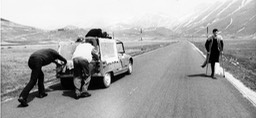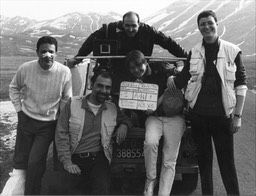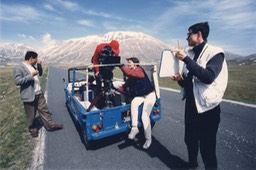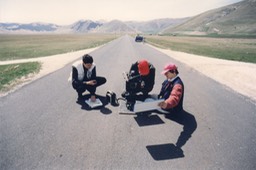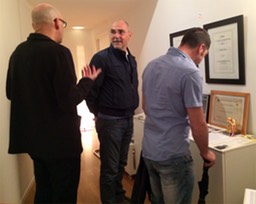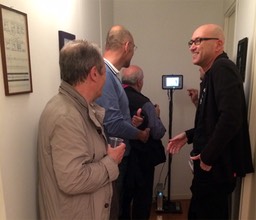Esattamente vent’anni dopo la sua presentazione al Festival di Cannes, nella Selezione Ufficiale in Concorso, l’Ospizio Giovani Artisti commemora ‘Una strada diritta lunga’, uno dei cortometraggi più visti e discussi degli anni’90, il cui progetto iniziale era pensato in realtà per la realizzazione di una video-installazione in una galleria d’arte. La mostra presenta le due versioni esistenti, interviste televisive, documentazioni bibliografiche e foto di scena del set, di Francesco Cavaliere, che è anche attore protagonista nel cortometraggio.
Exactly twenty years after its presentation at the Cannes Film Festival, in the Official Selection in Competition, the Ospizio Giovani Artisti commemorates 'Una strada diritta lunga', one of the most watched and discussed short films of the 1990s, whose initial project was actually conceived for a video-installation in an art gallery. The exhibition presents the two existing versions, television interviews, bibliographic documentation and scene photos of the set, by Francesco Cavaliere, who is also a leading actor in the short film.
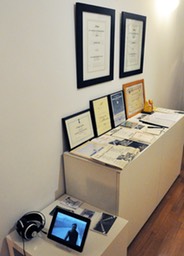
UNA STRADA DIRITTA LUNGA VENT’ANNI, A straight road twenty years long, 19th of May 2014, OGA, Roma, Italy
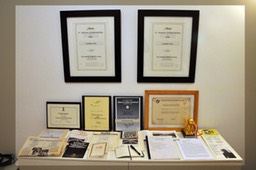
UNA STRADA DIRITTA LUNGA VENT’ANNI, A straight road twenty years long, 19th of May 2014, OGA, Roma, Italy
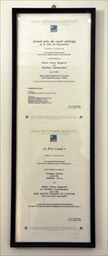
UNA STRADA DIRITTA LUNGA VENT’ANNI, A straight road twenty years long, 19th of May 2014, OGA, Roma, Italy
UNA STRADA DIRITTA LUNGA VENT’ANNI, A straight road twenty years long, 19th of May 2014, OGA, Roma, Italy
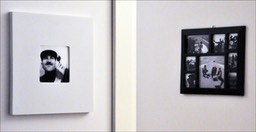
UNA STRADA DIRITTA LUNGA VENT’ANNI, A straight road twenty years long, 19th of May 2014, OGA, Roma, Italy
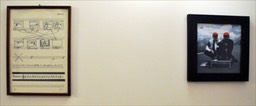
UNA STRADA DIRITTA LUNGA VENT’ANNI, A straight road twenty years long, 19th of May 2014, OGA, Roma, Italy
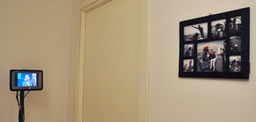
UNA STRADA DIRITTA LUNGA VENT’ANNI, A straight road twenty years long, 19th of May 2014, OGA, Roma, Italy
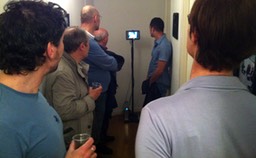
UNA STRADA DIRITTA LUNGA VENT’ANNI, A straight road twenty years long, 19th of May 2014, OGA, Roma, Italy
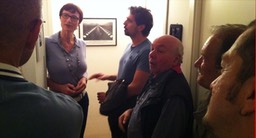
UNA STRADA DIRITTA LUNGA VENT’ANNI, A straight road twenty years long, 19th of May 2014, OGA, Roma, Italy
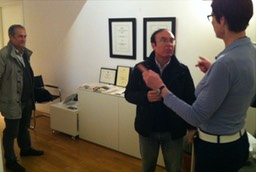
UNA STRADA DIRITTA LUNGA VENT’ANNI, A straight road twenty years long, 19th of May 2014, OGA, Roma, Italy
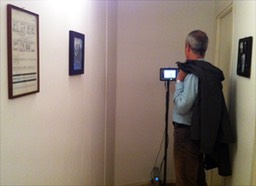
UNA STRADA DIRITTA LUNGA VENT’ANNI, A straight road twenty years long, 19th of May 2014, OGA, Roma, Italy
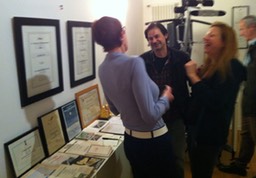
UNA STRADA DIRITTA LUNGA VENT’ANNI, A straight road twenty years long, 19th of May 2014, OGA, Roma, Italy
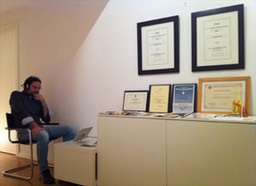
UNA STRADA DIRITTA LUNGA VENT’ANNI, A straight road twenty years long, 19th of May 2014, OGA, Roma, Italy
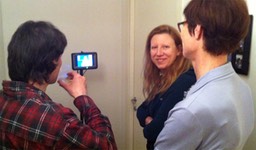
UNA STRADA DIRITTA LUNGA VENT’ANNI, A straight road twenty years long, 19th of May 2014, OGA, Roma, Italy
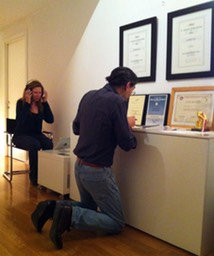
UNA STRADA DIRITTA LUNGA VENT’ANNI, A straight road twenty years long, 19th of May 2014, OGA, Roma, Italy
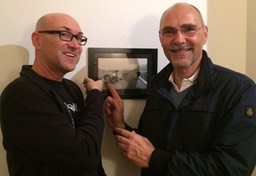
UNA STRADA DIRITTA LUNGA VENT’ANNI, A straight road twenty years long, 19th of May 2014, OGA, Roma, Italy
Nel 1993, cioè un anno prima della realizzazione del cortometraggio, Werther Germondari pensava a ‘Una strada diritta lunga’ come ad un lavoro in cui l’immagine fosse strettamente legata alla musica, tanto che la generazione di quest’ultima doveva nascere dalla stessa sequenza di montaggio, e sulla rivista bolognese di trasversalità artistiche ‘La Stanza Rossa’ (n°6, anno 2, Ed. dell’Ortica) scriveva: “Il metodo di lavoro ha previsto la progettazione di un sistema che colleghi strettamente ripresa, montaggio e suono: la volontà è infatti quella di creare un continuum, in ragione anche delle brevità del film, tra la sequenza del montaggio e quella musicale durante i titoli di testa e di coda. Ciò ha portato alla scelta di sette inquadrature base; assegnando una nota a ciascuna inquadratura la sequenza di montaggio si trasforma in uno spartito. Sarà il computer a consentire l'esecuzione musicale di tutte le possibili combinazioni, permettendo di decidere l'assegnazione definitiva inquadrature/note. Lo spartito ricavato subirà prevedibilmente varie elaborazioni, sia per quello che riguarda i tempi e le pause musicali rispetto ai ritmi del montaggio definitivo sia per approfittare, ad esempio, delle inquadrature di dettagli; queste ultime, prevedendo al loro interno delle differenze, sono infatti sfruttabili come micro-varianti di uno spartito minimale. Verrà comunque sempre mantenuta inalterata l'identità tra la sequenza delle inquadrature nel film e quella delle note nei titoli’. Il lavoro si sviluppò invece in forma cinematografica, addirittura ‘classica’, con tanto di utilizzo del 35mm, e in co-regia con Maria Laura Spagnoli. Tale scelta fu essenzialmente dovuta a due fattori: il fatto che Germondari, interessato da sempre alle interazioni tra il mondo delle arti visive e quello cinematografico, si era da poco diplomato come borsista al Centro Sperimentale di Cinematografia di Roma, e poi che, come scriveva sempre Germondari nello stesso articolo, ‘come il soggetto potrebbe continuare all'infinito, la strada diritta lunga potrebbe non finire mai, sorta di metafora della striscia di pellicola’. Così come poi invece la pellicola, a causa dell'arrivo del digitale, ha fatto una brutta fine, nel corto non sono poi state usate musiche, ma alcuni 'effetti', campionati, sono stati ‘suonati’ in diretta durante il mix. Nella sua versione cinematografica ‘Una strada diritta lunga’ ha avuto un’enorme diffusione in festival internazionali, vincendo premi, poi in rassegne, venendo distribuito nei cineforum e poi in un film composto dai migliori cortometraggi degli anni novanta. Venne inoltre trasmesso in numerose televisioni internazionali. ‘Una strada diritta lunga’ fu anche preso come esempio in libri su di come realizzare un cortometraggio, come ‘Fare un Corto’, di Vincenzo Scuccimarra (ed. Dino Audino), del 1996, o analizzato all’università in tesine di semiotica. Anche il poster del cortometraggio, realizzato sempre da Germondari, venne presentato in mostre, o inserito in libri, come ‘La strada, mito e metafora’ del 1996 (ed.Lupetti).
In 1993, a year before the short film was made, Werther Germondari thought of 'Una strada straight lunga' as a work in which the image was closely linked to music, so much so that the generation of the latter had to be born from the same editing sequence, and in the Bolognese magazine of artistic transversality 'La Stanza Rossa' (n°6, year 2, Ed. Ed. dell'Ortica) wrote: "The working method provided for the design of a system that closely links filming, editing and sound: the desire is in fact to create a continuum, also due to the brevity of the film, between the editing sequence and the musical one during the opening and closing credits. This led to the choice of seven basic shots; by assigning a note to each shot, the editing sequence is transformed into a score. The computer will play all possible combinations, allowing you to decide the final frame/note assignment. The score obtained will be processed in various ways, both in terms of times and musical pauses with respect to the rhythms of the final editing and to take advantage, for example, of the shots of details; the latter, foreseeing the differences within them, are in fact exploitable as micro-variants of a minimal score. The identity between the sequence of the shots in the film and that of the notes in the titles will always be maintained. The work developed instead in cinematographic form, even 'classic', with the use of 35mm, and in co-direction with Maria Laura Spagnoli. This choice was essentially due to two factors: the fact that Germondari, who had always been interested in the interactions between the world of visual arts and cinema, had recently graduated as a scholarship holder at the Centro Sperimentale di Cinematografia in Rome, and then that, as Germondari always wrote in the same article, 'how the subject could go on forever, the long straight road may never end, a sort of metaphor of the film strip'. Just as the film, due to the arrival of digital, came to a bad end, in the short film no music was used, but some 'effects', sampled, were 'played' live during the mix. In its film version 'Una strada straight lunga lunga' had a huge diffusion in international festivals, winning awards, then in festivals, being distributed in film forums and then in a film composed of the best short films of the nineties. It was also broadcast on numerous international television channels. Una strada straight lunga' was also taken as an example in books on how to make a short film, such as 'Fare un Corto', by Vincenzo Scuccimarra (ed. Dino Audino), 1996, or analyzed at university in semiotics essays. Even the poster of the short film, also made by Germondari, was presented in exhibitions, or included in books, such as 'La strada, mito e metafora' of 1996 (ed. Lupetti).
